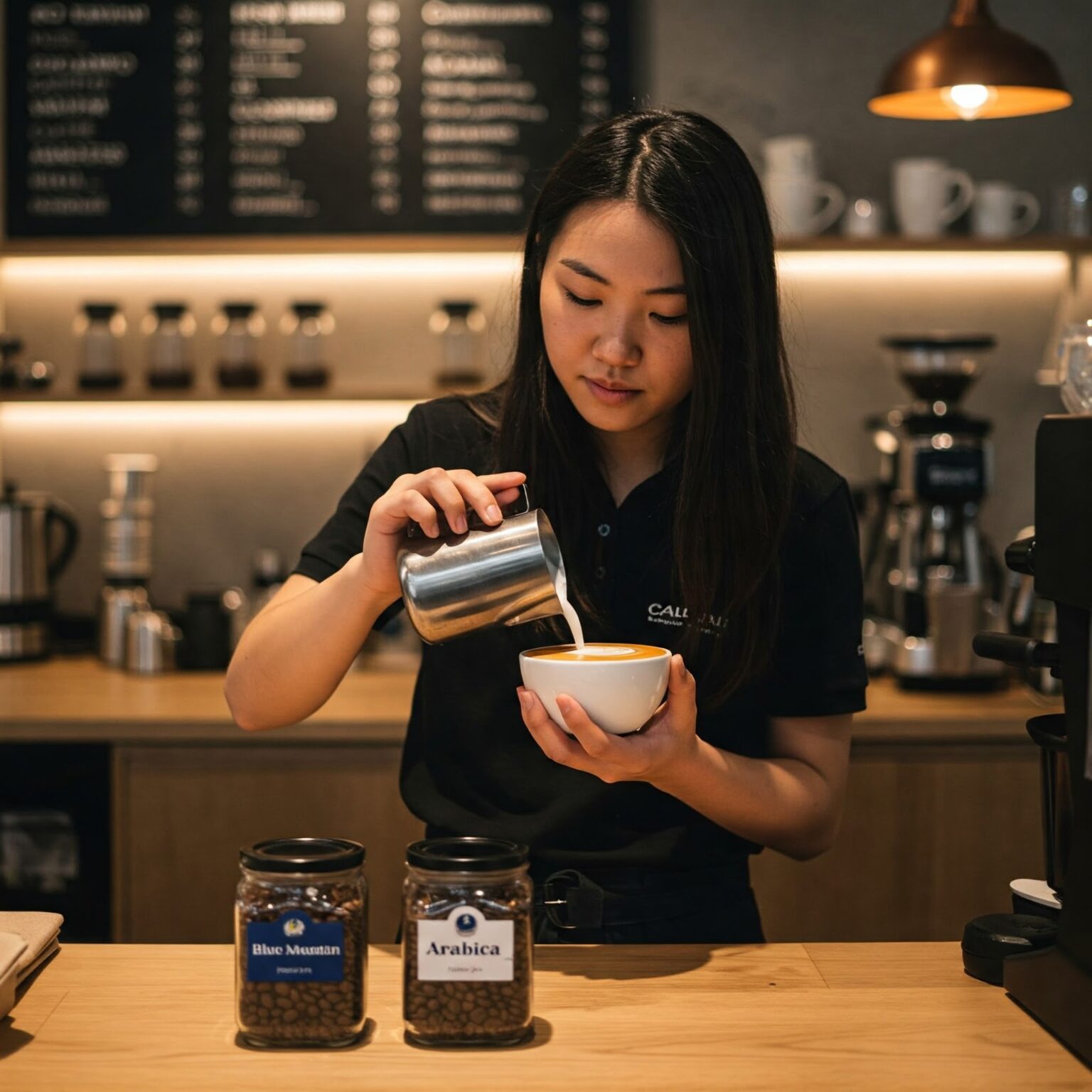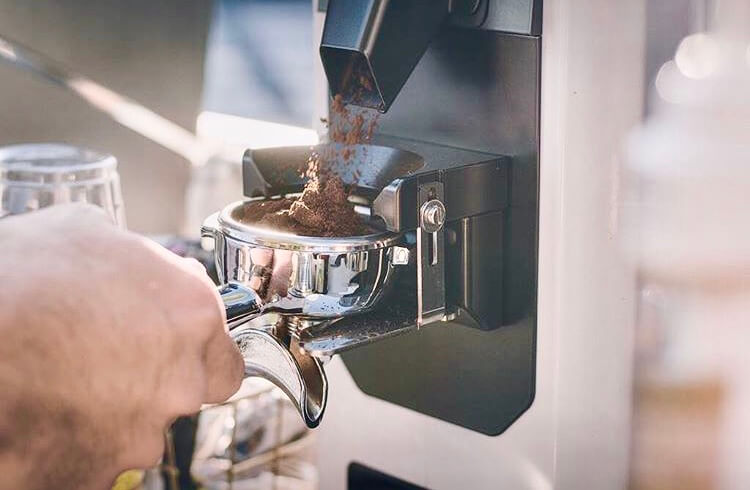Coffee Beans 101: Every Little Thing You Need to Understand About Coffee and Blended Coffee Beans
When it pertains to coffee, comprehending the subtleties of espresso and blended beans can change your daily cup. You'll uncover the distinct qualities of Arabica and Robusta beans, and just how each impacts flavor and high levels of caffeine web content. From the expanding process to roasting techniques, every step plays a role in your coffee experience. So, what makes the perfect mixture? Let's check out the essential components that add to a remarkable mug of coffee.
Comprehending Coffee Beans: Types and Varieties
When diving right into the globe of coffee, recognizing the kinds and varieties of coffee beans is vital for every lover. You'll mainly run into two primary species: Arabica and Robusta. Arabica beans are known for their smooth, intricate flavors and reduced high levels of caffeine material, making them a favorite amongst coffee connoisseurs. On the various other hand, Robusta beans pack a punch with a stronger, extra bitter taste and higher high levels of caffeine degrees, usually used in coffee blends.
Ethiopian Yirgacheffe uses bright flower notes, while Colombian beans supply a healthy flavor profile. By familiarizing on your own with these beans and their flavors, you'll raise your coffee experience and make more enlightened options in your brewing journey.
The Expanding Process: From Seed to Bean
When you discover the trip of coffee, it all beginnings with seed choice techniques that establish the foundation for quality. From there, cultivation and collecting play crucial roles in making sure the beans prosper. Handling approaches change those harvested cherries into the coffee beans you enjoy.
Seed Option Strategies
Selecting the right seeds is crucial for producing high-quality coffee beans, as it lays the structure for the whole growing process. You should begin by picking seeds from trusted sources that focus on high quality and hereditary diversity. Seek varieties understood to flourish in your details climate and soil problems. Take notice of the seed's age and storage space conditions, as fresh seeds tend to germinate much better. When feasible, go with natural seeds to minimize exposure to dangerous chemicals. Think about the illness resistance of different ranges, as this can significantly influence your return. Ultimately, don't think twice to speak with regional farmers or experts to obtain understandings into the ideal seed options for your region. This understanding will certainly enhance your coffee-growing experience.
Cultivation and Harvesting
As you nurture your coffee seeds right into thriving plants, comprehending the farming and harvesting process is important for attaining the most effective taste and high quality. Begin by planting your seeds in well-draining soil, ideally in a shaded location to secure them from direct sunlight. As your plants grow, preserve constant wetness, and be mindful of their requirement for nutrients. Prune on a regular basis to promote airflow and healthy growth.
Hand-picking is frequently the best approach to assure just the ripest cherries are selected. Timing is important; gathering as well late or also very early can impact the flavor account of your beans.

Processing Techniques Explained
When you've collected your coffee cherries, the next crucial step is refining them to transform those lively fruits into the beans you'll make. In the dry process, you spread the cherries out in the sunlight to dry, enabling the fruit to ferment and give unique tastes to the beans. Understanding these techniques is crucial to appreciating your coffee experience.
Roasting Techniques: Exactly How Taste Is Created
When it involves roasting coffee beans, recognizing roast degrees is key to exposing their unique tastes. Each toasting technique impacts the scent and improves the taste development procedure, giving you a richer coffee experience. Let's discover just how these elements collaborated to elevate your day-to-day mixture.
Roast Degrees Clarified
Roast degrees play a necessary duty in forming the taste account of your coffee. By comprehending these degrees, you can better select a coffee that matches your preference choices. Experiment with various roasts to discover which one reverberates with you, boosting your general coffee experience and enjoyment.
Effect On Fragrance
The roast level not only influences the taste of your coffee but additionally greatly influences its aroma. When you select a light roast, you'll frequently discover intense, floral notes that can make your coffee smell fresh and lively. As the beans dim, the fragrance changes; a tool roast draws out much more well balanced, caramelized scents, while a dark roast often tends to feature strong, smoky touches. Each roasting strategy launches various unstable substances, shaping exactly how your coffee scents. Additionally, the quality of the beans plays a crucial duty; newly roasted coffee releases a lot more aromatic oils, improving that enticing scent. Pay interest to the roast level-- it's key to disclosing the full fragrant experience of your mixture.
Flavor Growth Refine
As you explore the taste growth process, you'll find that roasting strategies play an essential duty in shaping the taste profile of your coffee. The roasting temperature level and time directly affect the acidity, sweetness, and bitterness of the beans. Light roasts retain even more of the bean's original tastes, highlighting fruity and floral notes. Tool roasts balance acidity and body, supplying a well-rounded taste. Dark roasts, on the other hand, highlight bold, smoky qualities while decreasing the bean's integral qualities. Throughout roasting, chain reactions, like the Maillard reaction and caramelization, change the beans and improve their intricacy. Explore various roasting levels can help you locate your ideal mixture, so don't hesitate to taste and find the rich range of tastes! Single Origin Espresso
Espresso vs. Blended Coffee: Secret Differences
Coffee and blended coffee each deal unique experiences that cater to different tastes and preferences. Espresso is a concentrated coffee made by forcing hot water with finely-ground coffee beans, resulting in an abundant, strong taste and a velvety layer of crema on the top. It's commonly delighted in as a shot or made use of as a base for drinks like lattes and cappuccinos.
On the various other hand, mixed coffee combines different beans from different areas, producing a more balanced taste account. You'll typically discover blends that highlight acidity, body, or sweet taste, making them flexible for various brewing techniques. While coffee concentrates on intensity, blended coffee may provide a wider series of flavors that can transform with each sip.
Eventually, your selection in between espresso and combined coffee boils down to your individual preference. Whether you crave a quick jolt or a leisurely cup, both alternatives have something delicious to provide.

Brewing Approaches: Unlocking the Perfect Cup
When it concerns brewing coffee, discovering the right approach can transform your experience and boost your cup. Each developing technique has its special charm and can greatly impact your coffee's taste and aroma. For instance, utilizing a French press permits you to delight in a robust and abundant mixture, while a pour-over approach provides a clean, intense mug with unique tastes.
If you like coffee, spending in a top quality device can aid you master the art of pulling shots. Additionally, for comfort, a single-serve husk system offers rate without giving up preference.
Don't neglect concerning chilly mixture, which supplies a smooth, less acidic coffee perfect for warm days. Experiment with different techniques to uncover what resonates with your palate.
Tasting Notes: Identifying Taste Profiles
How can you truly value your coffee if you do not know what flavors to try to find? Tasting notes are your guide to recognizing the complicated world of coffee. Pay attention to the preliminary tastes that strike your taste when you drink. You might detect fruity notes, like berry or citrus, or possibly a nutty undertone. As you proceed to taste, observe just how the flavors develop-- this is referred to as the "finish." Some coffees could leave a chocolatey or caramel aftertaste, while others may have a bright, clean coating.
Consider the body of the coffee, too; is it airy and light or thick and syrupy? Do not neglect acidity; an intense level of acidity can add life, while a low acidity might provide a smoother experience. By identifying these taste accounts, you'll grow your link with each cup, making coffee sampling a fascinating journey of discovery.

Tips for Picking and Storage Coffee Beans
Picking and keeping coffee beans correctly can substantially improve your brewing experience. Beginning by choosing top quality beans that match your taste - SOE.
When you have your beans, keep them in an airtight container to avoid exposure to light, air, and moisture. A dark, cool place works best, so stay clear of keeping them in the fridge or fridge freezer, as this can present moisture. Only grind the quantity you require to keep freshness; whole beans retain flavor longer than pre-ground coffee.
Last but not least, attempt to use your beans within 2 to 4 weeks after opening for peak taste. Following these suggestions will certainly guarantee your coffee stays flavorful and satisfying, elevating your day-to-day brew to brand-new elevations.
Regularly Asked Concerns
How Much Time Do Coffee Beans Stay Fresh After Roasting?
Coffee beans remain fresh for regarding 2 weeks after roasting - SOE. You must save them in an airtight container, far from light and moisture. After that, their taste and fragrance begin to decrease significantly

Can I Mix Different Coffee Bean Varieties?
Definitely, you can blend different coffee bean ranges! Exploring with blends can improve flavors and develop a distinct preference profile. Simply make sure to stabilize the staminas and qualities of each selection for the very best results.
What Is the Perfect Work Dimension for Espresso?
For coffee, you'll desire a fine work dimension, regarding the texture of salt. This permits perfect extraction, resulting in a rich, savory shot. Experiment a little bit to find what matches your taste best!
Exactly How Does Elevation Affect Coffee Bean Flavor?
Elevation impacts coffee bean flavor by affecting the growth price and chemical structure. Higher altitudes cause slower growth, which boosts level of acidity and intricacy, providing your coffee a special and vivid preference you will not forget.
Exist Decaffeinated Versions of Coffee Beans?
Yes, there are decaffeinated variations of coffee beans. You can take pleasure in a rich coffee taste without the caffeine kick. Just try to find "decaf" blends at your regional coffee bar or specialty store.
Coffee Beans 101: Everything You Need to Know About Espresso and Blended Coffee Beans.
When diving right into the globe of coffee, recognizing the types and ranges of coffee beans is essential for every enthusiast.When it comes to roasting coffee beans, comprehending roast levels is essential to exposing their unique tastes. Espresso is a focused coffee made by forcing warm water through finely-ground coffee beans, resulting in a rich, bold taste and a creamy layer of crema on top.On the other hand, blended coffee integrates various beans from different areas, producing a much more well balanced flavor account.